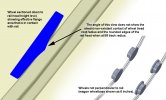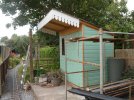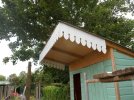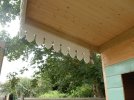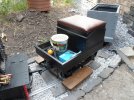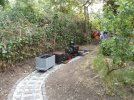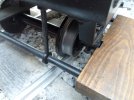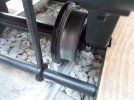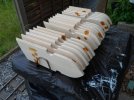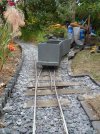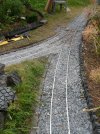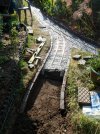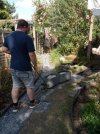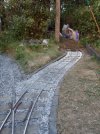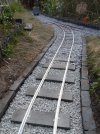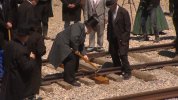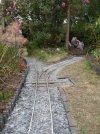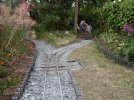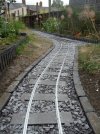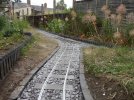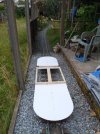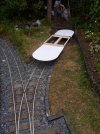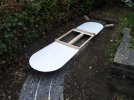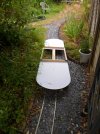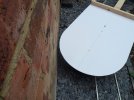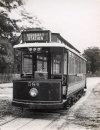Rain has stopped play, but I'm not complaining! Lovely, cool stuff coming down - and the best bit is that the garden soil will be a lot less than an imitation of concrete for a couple of days! I will be able to get back to the dig!
I have decided to take a bit of a risk, and lay the next section of the loop from the junction points, leading back towards the top curve. I would still have a tricky job getting the alignments correct, wherever I choose to close the loop anyway. The gradients are an additional problem, but at least laying this section with conventional sleepers in ballast will allow a bit of leeway. It might just mean that the summit of the line does not end up precisely where anticipated. Using water in a length of clear tube to measure the levels probably would be a good idea, but when looking at the site, the extra bit of faff would seem to be a touch of overkill?! Whatever, the main thinking behind my decision is to use the main line temporarily as a short spur or siding, primarily to provide a means of shifting the not inconsiderable amount of spoil yet to be removed.
The first rails, and a new batch of sleepers have been cut, ready for assembly, but before picking up the mattock, a niggling issue has been preying on my mind...
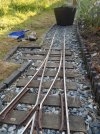
It might not be that obvious in the above image, but there is a slightly awkward flattening of the curve at the lead-in to the points.
When I constructed them last year, I had taken great care to measure and mark out a constant curvature. Unfortunately, I had previously misjudged the approach alignment on the pathway section, with slightly too sharp an inward turn of the boundary bricks and rails, and this effected the final placement of the points. The error may have been marginal, and not caused any running problems, but the visual irregularity, especially when seen from a distance, had been really bugging me ever since! The thought of having to get down and dirty on the ground to correct it, what with so many other things to do, was a little too daunting.
Yesterday, I realised that once the new formation was set and rails laid on the branch, any chance of future adjustment would be significantly more complicated, so resolved myself to deal with it!
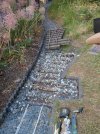
Once the top layer of large ballast had been sufficiently scraped out, I was able to jiggle the points back into the originally intended position!
Well, what a difference!
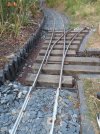
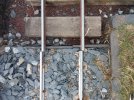
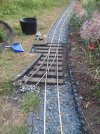
While it might only be a mere few millimetres, there will be some more work to re-set a couple of path fixings, and re-align the adjacent edging bricks for a neater appearance.
The latter task will be just a little bit easier as a result of the rain as well, although I am quite happy to wait until the grass dries out first!
Pete.

